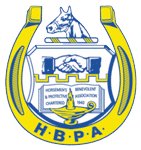Pushing Back on HISA’s Sudden Death Release: Where’s the Science?
 By Eric Hamelback, National HBPA CEO
By Eric Hamelback, National HBPA CEO
The Horseracing Integrity and Safety Authority (HISA) recently issued a press release addressing “Equine Sudden Death Syndrome.” Unfortunately, the statement raised more questions than answers. It cited no peer-reviewed published research (studies), offered no scientific references, and provided no direct link to the alleged research behind their claims, even though the research has been publicly presented. For an organization that claims to be guided by veterinary science, this lack of transparency undermines both credibility and trust.
Published (1988) research from the University of Pennsylvania based on necropsy analysis makes clear that one major cause of non-musculoskeletal injury-driven ‘sudden equine death’ was/is exercise-induced pulmonary hemorrhage (EIPH).1 In the Pennsylvania necropsy study on 11 sudden death horses 9 were attributable to EIPH, 1 bled to death, 1 died of CNS trauma, and cardiac lesions were not found in any of the 11 horses. The published scientific record is clear on this point. EIPH is a well-documented, long-term risk factor for horses in training and racing, and it has been recognized across international jurisdictions.
Also not included the HISA press release are the several factors that contribute to difficulties of monitoring ECGs in the horse during exercise. These factors can affect the accuracy and reliability of the diagnosis and were not mentioned.
Limitations of Heart Rate Monitors:
- Signal Quality: Monitors can struggle to obtain clear signals. Perhaps satellite position or structures, can block signals even interfere with reception. Additionally, the movement of the electrodes, sweat, and hair can interfere with the sensors. All of these factors will lead to inaccurate readings.
- Detection of Irregularities: Sorting through reams of data, literally hundreds of hours of recordings to identify the irregular heartbeat patterns characteristic of atrial fibrillation (AF), is a monumental task and requires patience, experience and a certain amount of imaginative subjectivity. The readouts themselves have to be corrected for typical irregularities that are then “overwritten” by the editor. If those readings are less rigorously edited, more artifacts show up and can be interpreted as higher incidence of AF in a recording
- Calibration Issues: Some monitors may not be calibrated for the unique physiology of a racehorse that has insufficient electrolyte balance, leading to discrepancies in heart rate readings. This can also result in false positives or negatives when assessing evidence for AF.
I believe these omissions go beyond being merely academic. By disregarding the substantial body of research identifying EIPH as a central factor in equine sudden death,1,2 HISA diverts attention from one of the industry’s most pressing and urgent issues. Moreover, by failing to acknowledge the limitations of the current monitoring devices in its release, the message appears designed to direct readers toward a narrow interpretation rather than the broader reality reflected in veterinary science and peer-reviewed research.
Equally concerning, the Authority continues to neglect how the removal of furosemide (Lasix), which is a proven, protective medication against EIPH will exacerbate risk.3,4 Lasix does not eliminate bleeding in every horse, but it is scientifically proven to reduce the severity, and countless trainers, veterinarians, and horsemen have observed its role in protecting horses from the most dangerous episodes of pulmonary bleeding.5
Our industry deserves and must demand transparency, data, and solutions. If HISA truly wishes to advance equine welfare and gain trust within the industry, it should:
- Publish the science. Any claims about sudden death need to be supported with peer-reviewed data and linked references.
- Acknowledge EIPH. Decades of veterinary science cannot be brushed aside in favor of press statements.1,2,5
- Revisit the Lasix ban. If the goal is reducing equine fatalities, then policies that may be worsening risk must be re-examined honestly, and there is science to back that up.
The welfare of racehorses and the integrity of the sport depend on clear, evidence-based leadership. This is not what we are receiving in this last HISA press release. Anything less does a disservice to horsemen, veterinarians, and most importantly, the horses themselves.
References:
[1] Gunson DE, Sweeney CR, Soma LR. Sudden death attributable to exercise-induced pulmonary hemorrhage in racehorses: Nine cases (1981-1983). Journal of the American Veterinary Medical Association 1988; 193:102–6. doi:10.2460/javma.1988.193.01.
[2] Tobin T, Galley R, Brewer K, Briceno AM, Leon DV. Furosemide, the Prevention of Epistaxis and Related Considerations: A Preliminary Evaluation. Intern J Appl Res Vet Med 2012; 10:176–85.
[3] Gallager J. New York Thoroughbred Horseman’s Association 2011.
[4] Heller B. Run, baby, run: What every owner, Breeder & Handicapper should know about lasix in racehorses. Neenah, Wis: Russell Meerdink Co; 2002.
[5] Hinchcliff KW, Morley PS, Guthrie AJ. Efficacy of furosemide for prevention of exercise-induced pulmonary hemorrhage in thoroughbred racehorses. Journal of the American Veterinary Medical Association 2009; 235:76–82. doi:10.2460/javma.235.1.76.





